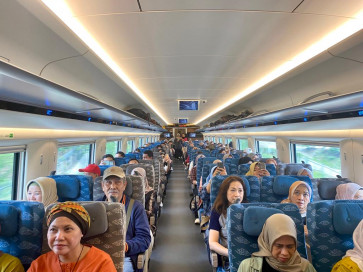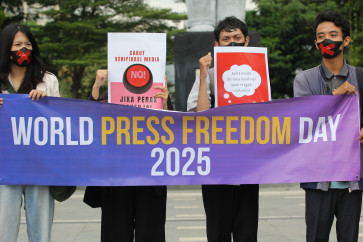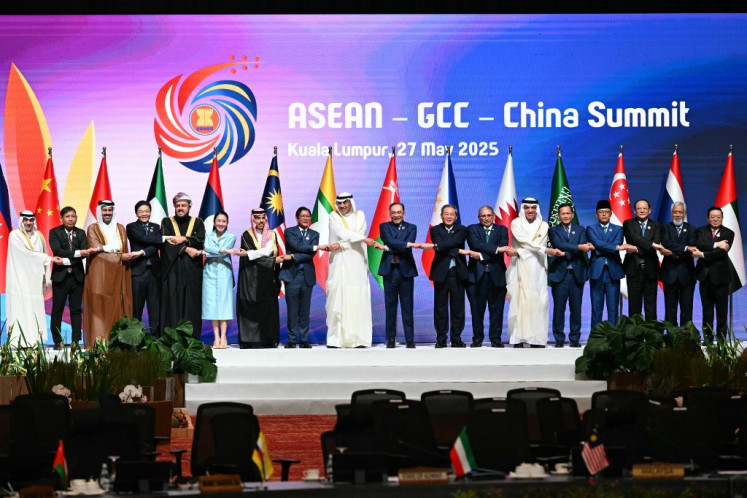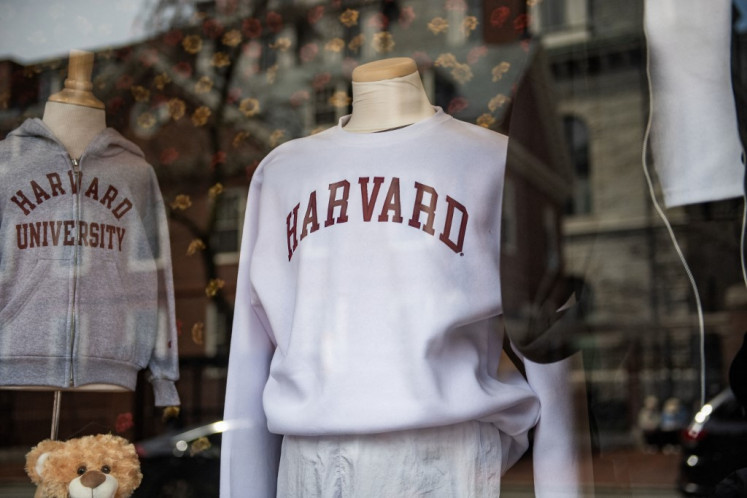News media bargaining code: Should Indonesia follow?
If the government adopts a media bargaining regulation, it will likely benefit big news providers backed by conglomerates such as CT Corp, Media Group and MNC Group.
Change text size
Gift Premium Articles
to Anyone
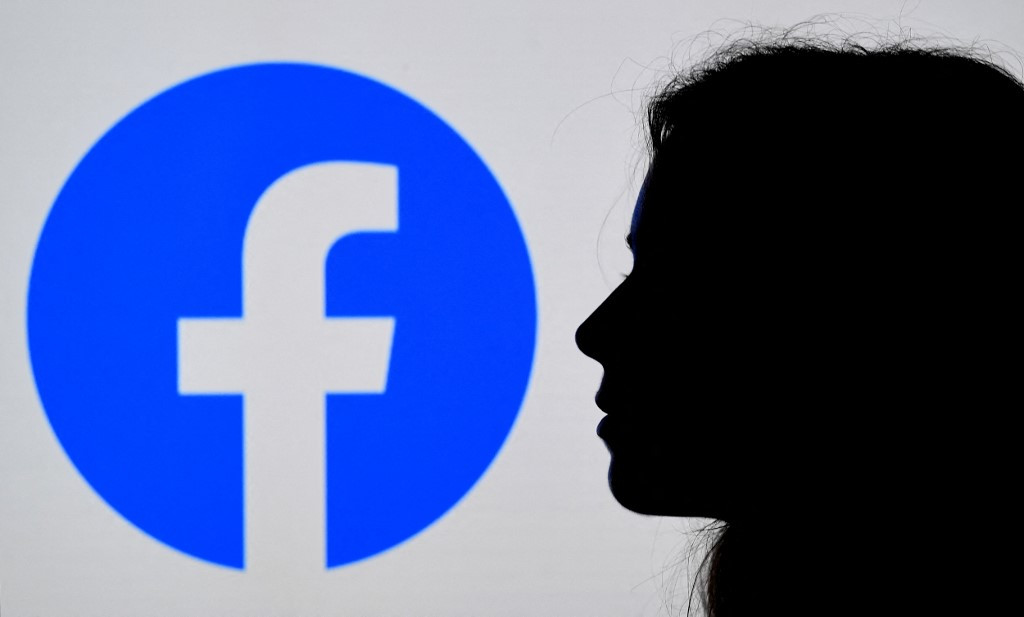
T
he Australian government has mandated that media platforms such as Google and Facebook pay local news providers for displaying the providers’ content on their platforms. As is the case in other countries, Australian news organizations have been struggling to survive in the digital era because they have lost advertising profits while digital media platforms enjoy huge profits.
As pillars of democracy, local news providers play a crucial role in society. It is, therefore, important that journalism is free and independent. Research shows a significant relationship between the loss of journalism and a decline in public participation and trust in democracy. Because of the importance of news media, governments are willing to support their domestic news industries to prevent them from dying in the era of digitalization.
Digital platforms usually display the local news of a country without giving compensation to the news provider. In the viewpoint of the Australian government, there are imbalances in bargaining power between digital platforms and news media providers. In an effort to optimize domestic welfare, the Australian government has decided to require platforms like Google and Facebook to negotiate payment to local media organizations for access to their news content.
In the lead-up to the passage of the legislation, Facebook blocked Australian users from sharing or viewing news content on its platform. Google took a different tack by temporarily preventing local Australian news from being displayed on its platform in Australia.
On Nov. 26, the parties reached an agreement that large digital platforms would have to negotiate compensation with local news providers. The Australian government said the solution would be a lump-sum fee, the amount of which remains confidential. Google eventually signed an early agreement with the leading news providers in the country.
Should Indonesia follow suit? Before answering this question, it is important to first understand the actual problem. In digital advertising, the market share of local news media providers has declined sharply.
For example, in Australia, newspapers captured only 10.3 percent of the advertising market in 2018, while the internet took 42.6 percent. It is predicted that in 2023 the market share of newspapers will shrink to 4.2 percent and that of the internet will jump to 57.7 percent.
The cause of the sharp decline in the advertising market share of local news providers should be the first issue to be addressed. It could be that people are no longer interested in reading the news, that reading news reports from original content providers has become more impractical and expensive or that other media has gained more popularity and has replaced the role of news media.
In a survey conducted during the 2019 British election, the Reuters Institute for the Study of Journalism found that reading the news took up just 3 percent of respondents’ time online.
One natural question arising from the news media bargaining code is who will benefit and who will suffer from the law. Choosing optimal policies is, unfortunately, not as simple as letting the rich subsidize the poor. We are aware of the competition in digital advertising between giant media platforms and news media providers, with Google and Facebook as the dominant players and news media providers the smaller ones.
However, one fact that is often ignored is that social media platforms play a crucial role in making news visible to audiences. In other words, news media providers, too, benefit from having their content displayed by social media platforms, though without compensation. The complaints following the backlash attempted by Google and Facebook indicate the potential losses associated with the new policy.
If the giant platforms chose not to comply with the regulation, they would still have other content to display on their platforms, though this content would possibly be less appealing to Australians. Local news media providers, on the other hand, would lose the benefit they had enjoyed from the “free advertisement” by the platforms. This consideration is crucial for estimating the bargaining power of the government.
Another issue is the use of lump-sum fees instead of per-click payments as the compensation scheme. From the Australian government’s perspective, the revenue crisis experienced by the local news media providers is due to unbalanced market power between giant social media platforms and news media providers.
To help alleviate the revenue crisis, negotiation over a lump-sum fee might appear appropriate in the context. However, looking through different angles and considering the mutualism between digital platforms and news media providers, paying on a per-click basis should be fair for both parties. The government should assist news media providers in negotiating with these large platforms to find the appropriate compensation scheme.
The online media platforms have decided to adhere to the rule and negotiate with some news media providers. But should countries like Indonesia follow? Each country has a different market landscape and, hence, requires a distinct policy. One fact that merits reexamination is that the giant platforms have signed agreements with only a few major news providers in Australia.
If the Indonesian government adopts this regulation, it will likely benefit big news providers backed by conglomerates such as CT Corp, Media Group and MNC Group, leaving behind small ones. Such an arrangement would widen the gap between small and big news providers in the country. Therefore, we cannot just copy and paste the regulations of the Australian government.
So what is the way forward? First, the Indonesian government might need to investigate if local news providers have indeed suffered losses from declines in advertising revenue coinciding with the rise of social media. Then, further analysis will be necessary to identify the causes of the setback. Does news exposure on digital platforms lead to revenue decline? Are losses caused by a diminishing value of original content? Are people losing interest in the news? Or are there other reasons?
Finally, the government needs to carefully consider the compensation scheme that might be relevant to the country’s news market landscape, whether this is a lump-sum arrangement, a per-click fee or a combination of the two.
***
The writer is an economic researcher and lecturer in the Universitas Atma Jaya Yogyakarta Department of Economics and a PhD candidate in the Department of Economics at the National Dong Hwa University, Taiwan, focusing on competition in digital economics.

